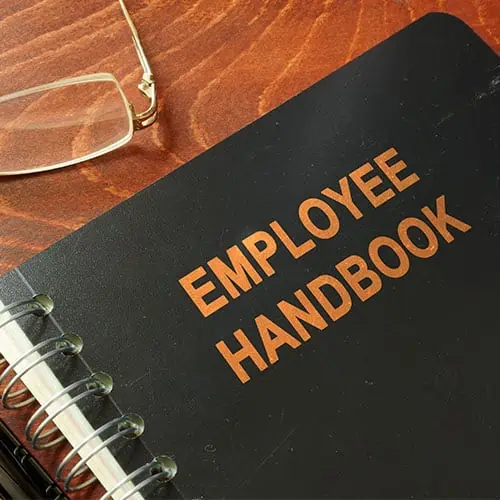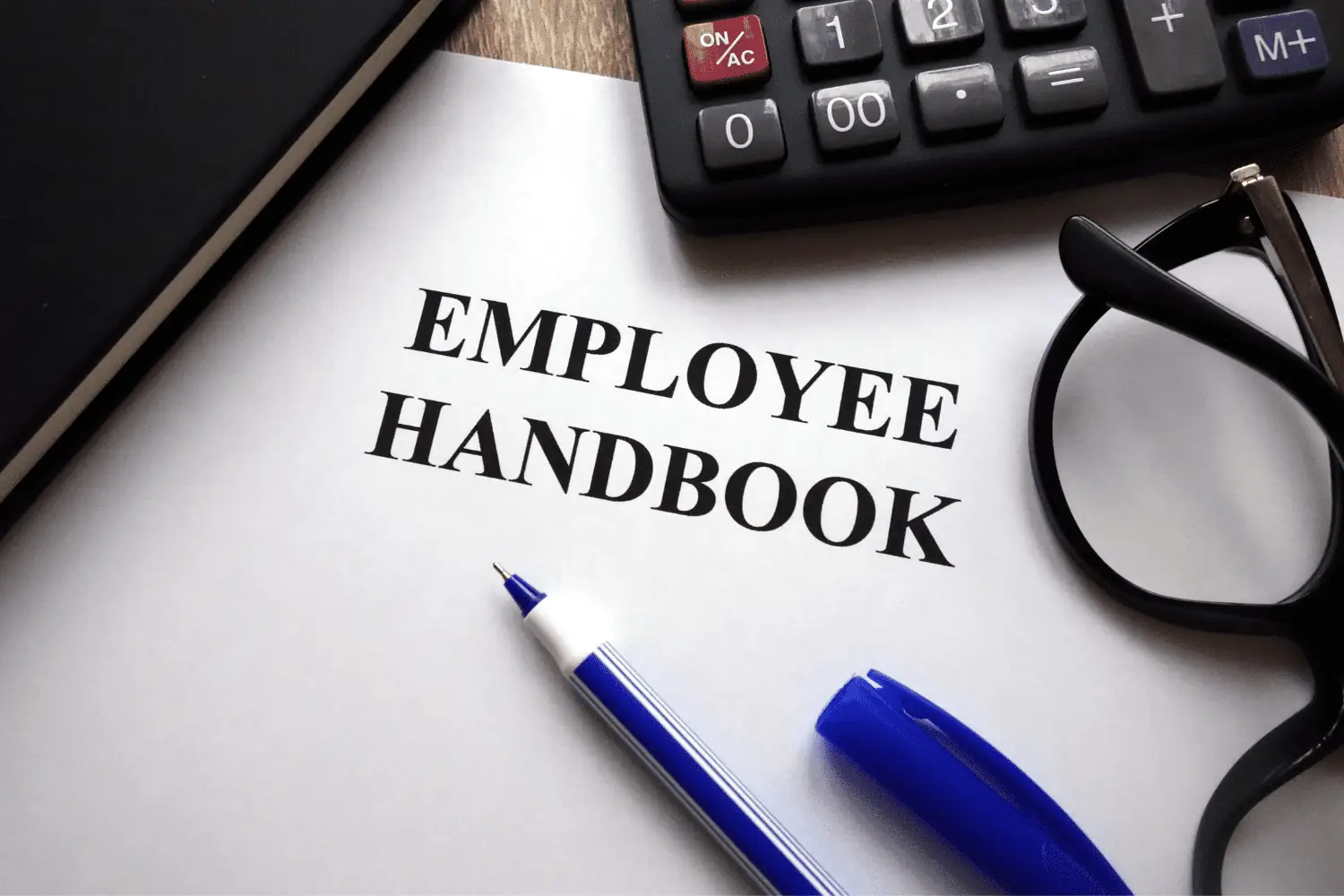7 Critical Mistakes to Avoid in Employee Handbook Development

Not every employer or HR department gives employee handbook development the attention it deserves. It’s not uncommon for a company to write a handbook and leave it on the shelf forever, never updating it or distributing it to employees. Even more detrimental, a company may even neglect to create a manual for employees at all! Without and employee handbook, human resources departments react to difficult events without the benefit of strong, clearly written policies that have already been shared and acknowledged by employees. Workplaces should note that an employee handbook that is updated, in compliance, and properly shared with employees can have real ROI for its organization. An employee handbook can help managers and employees alike perform their work, manage unpredictable employee events and situations, and contribute to their company for optimal success. Below are the top seven mistakes that HR departments often make when they are developing their employee handbook. This article will also share each step that a workplace and their HR department can use to correct these mistakes or to avoid them in the future.
1. Omitting at-will statements and disclaimers
An employee handbook for any company or organization in any state must include at-will statements. Each state may have its own additional policies or language that are also required. In the event an HR team misses these important sections in their company handbook development, they are risking compliance. They may be subject to fees, lawsuits, or their whole handbook could be rendered less effective in legal matters if it is missing these imperative components. To ensure companies include everything required in their employee handbook, one step an organization can take is to consult with a local employment lawyer or they might consult with professional HR services providers like MP.

2. Not managing to the policies
Even when an HR department develops a comprehensive employee manual for their company, it’s only effective if management is trained in it and uses it to manage employees consistently. Managing to the policies of the company handbook is possibly the most crucial step in the whole process. It’s also important to note that managers must manage to the HR department’s policies with all employees equally so that there are no concerns about discrimination. Some employees cannot be held responsible for a particular policy at work while others are not. These are the kinds of events that could lead to discrimination lawsuits from employees or former employees.
3. Not revising the handbook on a regular basis
When a company fails to update its handbook at least once a year, it’s likely to miss new legislative and industry compliance information and events. An organization may also make its own changes that impact employees: a rebrand, new policies for vacation, PTO, attendance, etc. In 2020 and 2021 especially, a company or organization may be considering how to allow its employees to work from home and how this might affect their daily schedules, expectations, the way they work together, and also worker’s compensation claims and concerns. To protect the company and ensure everyone is on the same page, one step an HR department should take is to update their handbook with thorough, articulate work from home policies for employees. A company can ensure their employee handbook is completely up to date by having its HR department review its policies once a year. An organization’s HR department should also regularly (at least once a quarter) research to see if there are any local, federal, and industry regulations and legislation that have not been accounted for in its employee manual.

4. Not distributing the employee handbook or getting documented employee acknowledgements
Even if a company is vigilant in updating its employee handbook and policies, none of this work matters if the employees haven’t read and acknowledged it. It’s a best practice for every organization (usually the human resource department) to update its employee manual. This is especially easy if it’s in a digital format. Then, the HR department share it with all employees in a manner that is easy to read and refer to. The HR department should send around an acknowledgement form which employees must sign. This form should state that the employee has seen and read the updated manual. If an employee is new, the HR department should include the company handbook and an acknowledgement sheet in the company onboarding materials. A member of the HR department should be responsible for ensuring that every employee has a recent acknowledgement on file. This step will be crucial when it comes to protecting the company from complaints, lawsuits, or issues with federal, industry, and state regulatory bodies.
5. “Borrowing” an employee handbook from another workplace without editing it
Any company that simply uses the same employee handbook from another workplace is at risk, especially when it comes to compliance. View our Employee Handbook Compliance Updates for 2021 & Beyond webinar to learn more. Every organization is subject to certain regulations and laws based on its location, industry and size. For example, some laws won’t apply to a workplace with less than 15 or even five employees. In the development of its handbook, every company should consider consulting with a labor lawyer or HR services providers to learn about its compliance requirements. A company with branches in different states may even need to take the extra step to develop a different handbook for each branch. State laws can vary deeply, especially when it comes to policies for employees and workers like paid family leave (here are our MA PFML resources), sick time, required workplace training, and also last paycheck procedures. Beyond compliance, an organization may also need to have its own custom policies because it allows employees to work remotely, or many of its employees are 1099 contractors. Borrowing an employee handbook from another company (without taking the crucial step of editing) will mean the document doesn’t fit every need for that specific workplace, its location, and also its industry.
6. Using a single handbook for every branch or every kind of employee
This isn’t necessarily a mistake for every workplace, but a company may benefit from having a different handbook if they have branches or offices in various locations (as mentioned above) or perhaps have employees with vastly different job descriptions. For instance, if an organization has corporate employees who have white-collar roles, can work remotely, and do knowledge-based work, they might require entirely different policies from the employees who have more blue-collar, customer-service oriented roles that need to come to the workplace each day. In fact, it could create less conflict and difficulty to give these distinct types of employees a separate handbook that only includes policies applicable to them and their roles. The same is true if a workplace has employees in different states. If one state has different laws about paid parental leave, an organization would benefit by creating a separate handbook for employees in each state with different work and parental leave policies.

7. Creating restrictive social media policies
HR departments that create strict policies that ban employees from sharing anything about work on their social media. A company that does this may be infringing on the FLSA (Fair Labor Standards Act) rights of its employees. Per the FLSA, employees must be able to speak freely about the conditions of their work or their company. To ensure they don’t create compliance issues, a company should ensure that their HR department reviews any social media policy for employees. They may also possibly remove this type of policy for employees completely from the company handbook.
Recent Employee Handbook Posts
Recent Posts
- From F‑1 to Green Card: Your Sponsorship Strategy for 2025
- DEI in 2025 — What HR Must Know Right Now
- Tip and Overtime Tax Deductions: HR Compliance Guide 2025 [FREE Printable Poster]
- Legislative Updates Every Employer Should Understand
- Your 2025 HR Compliance Checklist: What to Review and Update Now
Categories
- ACA (10)
- AI (6)
- BizFeed (6)
- Business Strategy (119)
- COBRA (5)
- Compliance (228)
- COVID-19 (92)
- Diversity (12)
- eBooks (19)
- Employee Engagement (33)
- Employee Handbooks (24)
- ERTC (29)
- FFCRA (7)
- HR (306)
- MP Insider (13)
- Payroll (148)
- PFML (9)
- PPP (24)
- PTO (5)
- Recruiting (53)
- Remote Work (39)
- Return to Work (32)
- Unemployment (1)
- Wellness (22)
Archives
- August 2025
- July 2025
- June 2025
- May 2025
- April 2025
- March 2025
- February 2025
- January 2025
- December 2024
- November 2024
- October 2024
- September 2024
- August 2024
- July 2024
- June 2024
- May 2024
- April 2024
- March 2024
- February 2024
- January 2024
- December 2023
- November 2023
- October 2023
- July 2023
- June 2023
- May 2023
- April 2023
- March 2023
- January 2023
- December 2022
- October 2022
- September 2022
- August 2022
- July 2022
- June 2022
- May 2022
- April 2022
- March 2022
- February 2022
- January 2022
- December 2021
- November 2021
- October 2021
- September 2021
- August 2021
- July 2021
- June 2021
- May 2021
- April 2021
- March 2021
- February 2021
- January 2021
- December 2020
- November 2020
- October 2020
- September 2020
- August 2020
- July 2020
- June 2020
- May 2020
- April 2020
- March 2020



